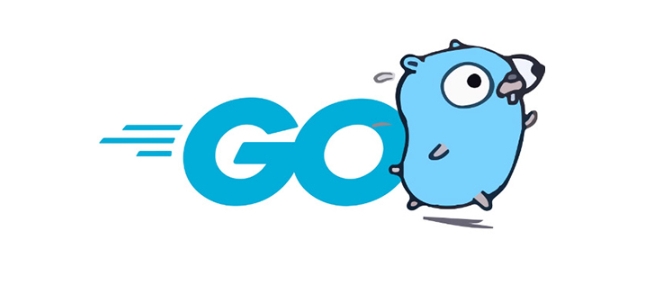How to recursively list all files in a directory in golang
Jul 09, 2025 am 02:12 AMThe easiest and most reliable way to recursively list all files in Go is to use the filepath.Walk function from the standard library. First, pass the root directory to filepath.Walk and provide a callback function, which will be called on each file and subdirectory; second, only files are processed in the callback function by judging info.IsDir() to be false; finally, filter logic optionally (such as filtering files by extension) and choose to skip or return an error immediately when an error is encountered to ensure program robustness.

In Go, recursively listing all files in a directory is a common task, especially when dealing with file management or data scanning. The easiest and most reliable way to do this is by using the filepath.Walk function from the standard library.

Using filepath.Walk to Traverse Directories
Go's filepath.Walk function lets you walk through a directory tree, calling a function for each file and subdirectory. This is perfect for recursive file listing.

Here's a basic example:
package main
import (
"fmt"
"os"
"path/filepath"
)
func main() {
root := "/your/target/directory"
err := filepath.Walk(root, func(path string, info os.FileInfo, err error) error {
if err != nil {
return err
}
if !info.IsDir() {
fmt.Println(path)
}
return nil
})
if err != nil {
fmt.Printf("Error: %v\n", err)
}
}- You pass in the root directory.
- The function gets called for every file and folder.
- We check
!info.IsDir()to only print files, not directories.
This approach handles nested folders automatically and avoids writing loops manually.

Filtering Files (Optional but Useful)
Sometimes you don't want all files — maybe just .txt or .log files. You can easily add filtering inside the walk function.
For example, to list only .txt files:
if !info.IsDir() && strings.HasSuffix(info.Name(), ".txt") {
fmt.Println(path)
}You can also use more complex logic like checking file size, modification time, or even reading parts of the file content if needed.
Some things to note:
- Make sure your filter conditions are efficient.
- Avoid doing heavy processing inside the walk function unless necessary.
- Use helper functions if the logic gets too long.
Handling Errors Gracefully
Directory walking can hit permission issues or broken symlinks. By default, filepath.Walk stops on any error unless you handle it.
Inside your walk function, if you return an error, the walk will stop. If you want to skip problematic paths and keep going, just log them and return nil .
Example:
if err != nil {
fmt.Fprintf(os.Stderr, "can't access %q: %v\n", path, err)
return nil // skip and continue
}Alternatively, if you want to stop immediately on first error, return that error.
This kind of control helps avoid crashes during large directory scans.
Alternative: Using ioutil.ReadDir with Recursion (Manual Way)
If you're curious how it works under the hood, you can manually implement recursion using os.ReadDir (or ioutil.ReadDir in older versions). But this requires writing more code and handling edge cases yourself.
Here's a simplified version:
func listFiles(dir string) error {
entries, err := os.ReadDir(dir)
if err != nil {
return err
}
for _, entry := range entries {
path := filepath.Join(dir, entry.Name())
if entry.IsDir() {
listFiles(path) // recursive call
} else {
fmt.Println(path)
}
}
return nil
} While this gives you more control, it lacks some built-in features of filepath.Walk , like better error handling and order guarantees.
So for most use cases, stick with filepath.Walk . It's simple, safe, and does exactly what you need without reinventing the wheel.
Basically that's it.
The above is the detailed content of How to recursively list all files in a directory in golang. For more information, please follow other related articles on the PHP Chinese website!

Hot AI Tools

Undress AI Tool
Undress images for free

Undresser.AI Undress
AI-powered app for creating realistic nude photos

AI Clothes Remover
Online AI tool for removing clothes from photos.

Clothoff.io
AI clothes remover

Video Face Swap
Swap faces in any video effortlessly with our completely free AI face swap tool!

Hot Article

Hot Tools

Notepad++7.3.1
Easy-to-use and free code editor

SublimeText3 Chinese version
Chinese version, very easy to use

Zend Studio 13.0.1
Powerful PHP integrated development environment

Dreamweaver CS6
Visual web development tools

SublimeText3 Mac version
God-level code editing software (SublimeText3)

Hot Topics
 How can you handle JSON encoding and decoding effectively in Go?
Jun 11, 2025 am 12:02 AM
How can you handle JSON encoding and decoding effectively in Go?
Jun 11, 2025 am 12:02 AM
Effective handling of JSON in Go requires attention to structural labels, optional fields and dynamic analysis. Use the struct tag to customize the JSON key name, such as json:"name"; make sure the fields are exported for access by the json package. Use pointers or omitempty tags when processing optional fields to distinguish between unprovided values ??from explicit zeros. When parsing unknown JSON, map[string]interface{} can be used to extract data with type assertions. The default number will be parsed as float64. json.MarshalIndent can be used to beautify the output during debugging, but the production environment should avoid unnecessary formatting. Mastering these techniques can improve the robustness and ability of your code
 How can Go programs interact with C code using Cgo? What are the trade-offs?
Jun 10, 2025 am 12:14 AM
How can Go programs interact with C code using Cgo? What are the trade-offs?
Jun 10, 2025 am 12:14 AM
Go programs can indeed interact with C code through Cgo, which allows Go to call C functions directly. When using Cgo, just import the pseudo-package "C" and embed C code in the comments above the import line, such as including C function definitions and calling them. In addition, external C library can be linked by specifying link flags such as #cgoLDFLAGS. However, there are many issues to pay attention to when using Cgo: 1. Memory management needs to be processed manually and cannot rely on Go garbage collection; 2. Go types may not match C types, and types such as C.int should be used to ensure consistency; 3. Multiple goroutine calls to non-thread-safe C libraries may cause concurrency problems; 4. There is performance overhead for calling C code, and the number of calls across language boundaries should be reduced. Cgo's lack
 How can Go applications be cross-compiled for different operating systems and architectures?
Jun 11, 2025 am 12:12 AM
How can Go applications be cross-compiled for different operating systems and architectures?
Jun 11, 2025 am 12:12 AM
Yes,Goapplicationscanbecross-compiledfordifferentoperatingsystemsandarchitectures.Todothis,firstsettheGOOSandGOARCHenvironmentvariablestospecifythetargetOSandarchitecture,suchasGOOS=linuxGOARCH=amd64foraLinuxbinaryorGOOS=windowsGOARCH=arm64foraWindow
 How does Go handle pointers, and how do they differ from pointers in C/C ?
Jun 10, 2025 am 12:13 AM
How does Go handle pointers, and how do they differ from pointers in C/C ?
Jun 10, 2025 am 12:13 AM
Go simplifies the use of pointers and improves security. 1. It does not support pointer arithmetic to prevent memory errors; 2. Automatic garbage collection and management of memory without manual allocation or release; 3. The structure method can seamlessly use values ??or pointers, and the syntax is more concise; 4. Default safe pointers to reduce the risk of hanging pointers and memory leakage. These designs make Go easier to use and safer than C/C, but sacrifice some of the underlying control capabilities.
 What are the implications of Go's static linking by default?
Jun 19, 2025 am 01:08 AM
What are the implications of Go's static linking by default?
Jun 19, 2025 am 01:08 AM
Go compiles the program into a standalone binary by default, the main reason is static linking. 1. Simpler deployment: no additional installation of dependency libraries, can be run directly across Linux distributions; 2. Larger binary size: Including all dependencies causes file size to increase, but can be optimized through building flags or compression tools; 3. Higher predictability and security: avoid risks brought about by changes in external library versions and enhance stability; 4. Limited operation flexibility: cannot hot update of shared libraries, and recompile and deployment are required to fix dependency vulnerabilities. These features make Go suitable for CLI tools, microservices and other scenarios, but trade-offs are needed in environments where storage is restricted or relies on centralized management.
 How do I create a buffered channel in Go? (e.g., make(chan int, 10))
Jun 20, 2025 am 01:07 AM
How do I create a buffered channel in Go? (e.g., make(chan int, 10))
Jun 20, 2025 am 01:07 AM
To create a buffer channel in Go, just specify the capacity parameters in the make function. The buffer channel allows the sending operation to temporarily store data when there is no receiver, as long as the specified capacity is not exceeded. For example, ch:=make(chanint,10) creates a buffer channel that can store up to 10 integer values; unlike unbuffered channels, data will not be blocked immediately when sending, but the data will be temporarily stored in the buffer until it is taken away by the receiver; when using it, please note: 1. The capacity setting should be reasonable to avoid memory waste or frequent blocking; 2. The buffer needs to prevent memory problems from being accumulated indefinitely in the buffer; 3. The signal can be passed by the chanstruct{} type to save resources; common scenarios include controlling the number of concurrency, producer-consumer models and differentiation
 How can you use Go for system programming tasks?
Jun 19, 2025 am 01:10 AM
How can you use Go for system programming tasks?
Jun 19, 2025 am 01:10 AM
Go is ideal for system programming because it combines the performance of compiled languages ??such as C with the ease of use and security of modern languages. 1. In terms of file and directory operations, Go's os package supports creation, deletion, renaming and checking whether files and directories exist. Use os.ReadFile to read the entire file in one line of code, which is suitable for writing backup scripts or log processing tools; 2. In terms of process management, the exec.Command function of the os/exec package can execute external commands, capture output, set environment variables, redirect input and output flows, and control process life cycles, which are suitable for automation tools and deployment scripts; 3. In terms of network and concurrency, the net package supports TCP/UDP programming, DNS query and original sets.
 How does Go ensure memory safety without manual memory management like in C?
Jun 19, 2025 am 01:11 AM
How does Go ensure memory safety without manual memory management like in C?
Jun 19, 2025 am 01:11 AM
Goensuresmemorysafetywithoutmanualmanagementthroughautomaticgarbagecollection,nopointerarithmetic,safeconcurrency,andruntimechecks.First,Go’sgarbagecollectorautomaticallyreclaimsunusedmemory,preventingleaksanddanglingpointers.Second,itdisallowspointe






